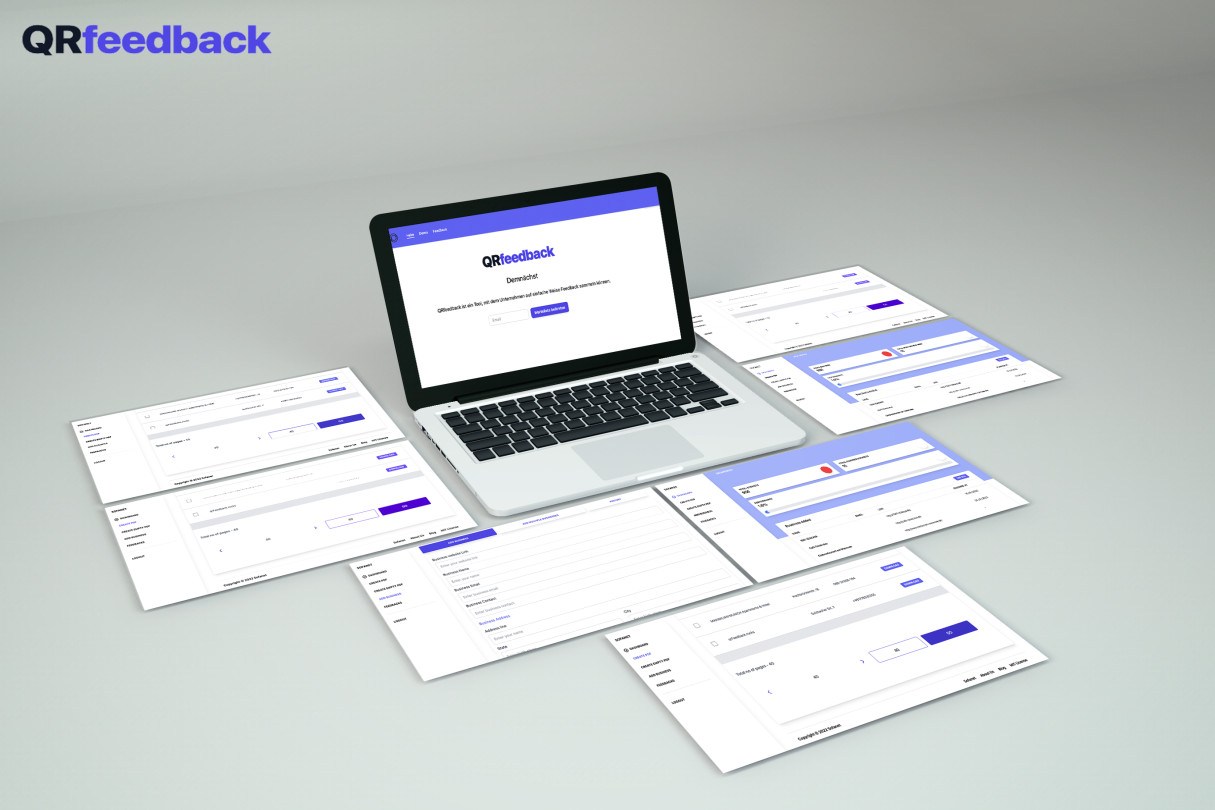Reading Time: 2 minutes
QRFeedback is an MVP project from Sofa Networks GmbH from Germany to create an easy to capture feedback for businesses.
The scope of the MVP was to build a feedback form for the consumers and create a dashboard for the admin to create QRFeedback stickers in bulk for businesses.
The product revolved around creating physical stickers by the admin and sending them across for different businesses or creating unregistered stickers for businesses to buy and try from any storefront.
The product was also made in German as their initial customers belonged from there.
Product Approach
We started building the product right from the Idea stage.
The client approached us with the need for an MVP solution. After much deliberation, the features approved by the clients were started for development.
In true essence, the client distributed the MVP into 3 phases.
Each phase are mentioned below:
- Phase 1 – included a dashboard to create pdfs with stickers for businesses to send out physical stickers to the known businesses for feedback.
- Phase 2 – contained a Feedback form for the consumer when a user scans the QR Code. Phase 2 also contained creating unregistered stickers for storefronts to sell them directly.
- Phase 3 – contains iterations from Phase 1 and Phase 2 with the feedback accumulated from the previous phases.
The product is built with FullStack Development with a new set of features designed to cater to the need of the market.
Technical Approach
We built QRFeedback webapp with,
- Django and DRF as our preferred backend technology for creating APIs.
- The front end was built with Vue.js and tailwind CSS.
- We have also used Redis as a queue and all crojobs with Celery.
- The project is hosted in Digital Ocean as the client’s preferred cloud solution.
- For production, we have utilized Gunicorn, supervisor, and Nginx for the webserver to run the backend on a subdomain and we have used pm2 to run the front of the application.
Our primary challenges included building the QRCodes in certain sizes and maintaining the pixelation in order.
Development Approach
- The development approach we followed for the project was to go with waterfall methodologies for product development due to the minimal nature of the product.
- We have utilized Slack for communications and google sheets shared by the client to manage the tasks needed under the sprints.
- As a standard SOP for our MVP projects, 3 rounds of testing were also undertaken to release the product for their consumers along with using the dashboard for the admins themselves.
Current State
Our clients had a successful release and are currently taking active feedback from their prospective clients.
We are currently supporting Phase1 and Phase 2 for the product and working on Phase 3 to bring about all the iterations as advised and felt by the client in the previous phases.

